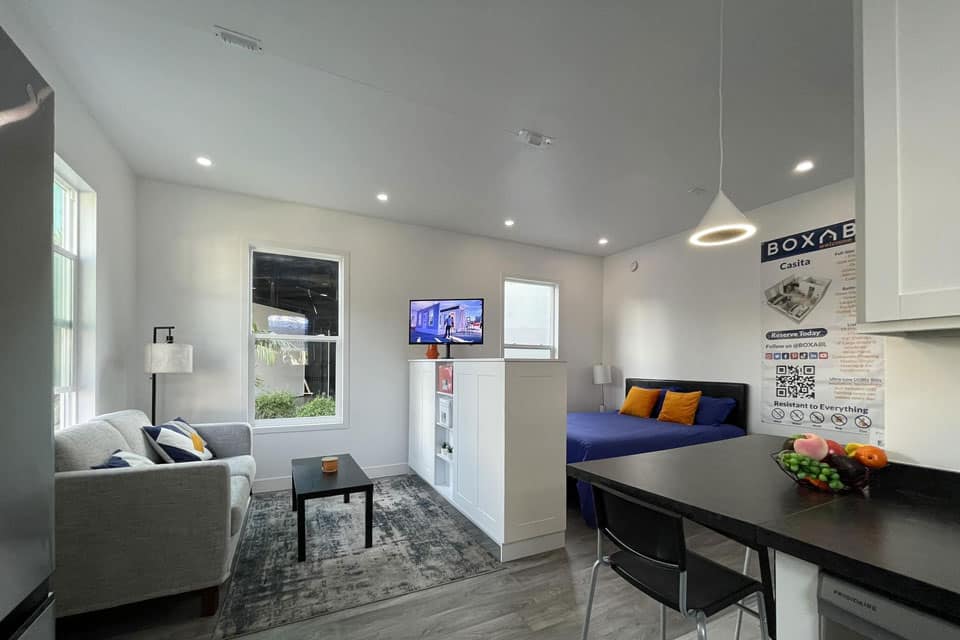Housing Industry Must Adopt High-Tech Principles to Solve Shortages

You don’t have to be the secretary of HUD to see that the U.S. is in the midst of an unprecedented housing crisis. According to an October 2021 Pew Research Center survey, “about half of U.S. adults (49%) say the availability of affordable housing is a major problem.” Rising real estate prices were troubling before COVID-19. The resulting pandemic caused materials and labor to skyrocket, guaranteeing that any correction in the housing market would still keep a new home purchase beyond the reach of far too many Americans.
Solving this problem will, of course, require technological innovation and economic incentives, but equally important will be the revolutionary shift in values needed to transform home ownership from dream to reality. Thirty years ago, a good home meant a big home. In the mid-1990s, suburban “McMansions” and “Garage Mahals” represented the values of a culture that had prospered during decades of relatively cheap, plentiful energy, and stable materials costs. All reliable indicators show that we no longer live in that world. That doesn’t mean we have to abandon home ownership, which, for many, is the sine qua non of the American dream. It means that we have to adapt.
“Build better not bigger.” These words, taken from architect Sarah Susanka’s bestselling 1998 book, The Not So Big House, encapsulate an architectural philosophy that prioritizes multi-purpose functionality, quality over quantity, and environmental sustainability in residential design and construction. To these we might also add insights taken from the tech sector, such as the ATAWAD acronym.
ATAWAD (Anytime, Anywhere, Any Device) characterizes the crucial requirements for any computer technology that connects to the Internet. Connectivity must be immediate (anytime), it must allow for maximum mobility (anywhere), and it must offer interchangeability between phone, laptop, tablet, etc. (any device). Viewed in this way, the ATAWAD acronym expresses the tech sector’s response to three core values of 21st century American culture: immediacy, mobility, and interchangeability. In the field of residential construction, we respond to these values with the terms foldable, portable, and modular.
Foldable homes can be completely assembled, prefabricated with automated manufacturing supervised by highly skilled technicians in factories, so that as few as two moderately skilled on-site workers can unfold a home, complete with kitchen and bathroom appliances, as well as utility hook-ups for plumbing, HVAC and electricity, in a few hours. While not quite move-in ready at the time of delivery, foldable homes offer a dramatic reduction in the wait time between ground breaking and owner occupancy.

Foldable homes are also highly portable, most fitting within the space of a standard shipping container. Many, like Boxabl’s Casita, can be shipped anywhere in the world. And portable does not mean disposable. Unlike traditional homes, foldable homes like the Casita can easily be refolded and reshipped for installation in a new location. As climate conditions become increasingly hard to predict, this sort of portability becomes a highly appealing option.
Casitas are made from steel, concrete and EPS (expanded polystyrene) foam. These are building materials that don’t degrade and will last a lifetime. The walls, floor and roof are structurally laminated panels that are much stronger than the average building material. They are rated for hurricane speed winds, and because they do not use common lumber or sheetrock, they are less likely to be damaged by water, and less likely to grow mold. The interior and exterior of the structure is clad with non-combustible materials, so flying embers that spread forest fires are not likely to ignite a Boxabl home. High quality construction means the Casita will not only survive the rigors of relocating, but also the weather conditions of wherever it is taken.
Modular design likewise affords a wide variety of assembly options. Again, using the Casita as an example, its modular design allows for two units to be stacked, so that a one-story home easily accommodates a second story, doubling living space from 375 square feet to 750. Modules can also be connected side by side or end to end, so that the increased living space remains within a single story. Modular homes like the Casita can also easily be outfitted with solar panels, rainwater collection and other features that make living off the grid a possibility.
The growing housing crisis will not be solved easily. It will require multipronged solutions from various stakeholders, who sometimes hold contradictory or even conflicting goals. The solutions that win out will be those that recognize and respond to the culture’s core values. The tech sector has responded to the core values of immediacy, mobility and interchangeability with “anytime, anywhere, any device” connectivity. The housing industry needs to respond with more foldable, portable, modular homes.
Have you read it?
The world’s top 20 most travel-obsessed countries, 2023.
The most Twitter-obsessed countries revealed, 2023.
The world’s top 10 most popular luxury brands for 2023.
The most fast food-obsessed countries in the world, 2023.
Who Are the Richest Sports Owners in the World, 2023?
Bring the best of the CEOWORLD magazine's global journalism to audiences in the United States and around the world. - Add CEOWORLD magazine to your Google News feed.
Follow CEOWORLD magazine headlines on: Google News, LinkedIn, Twitter, and Facebook.
Copyright 2025 The CEOWORLD magazine. All rights reserved. This material (and any extract from it) must not be copied, redistributed or placed on any website, without CEOWORLD magazine' prior written consent. For media queries, please contact: info@ceoworld.biz








